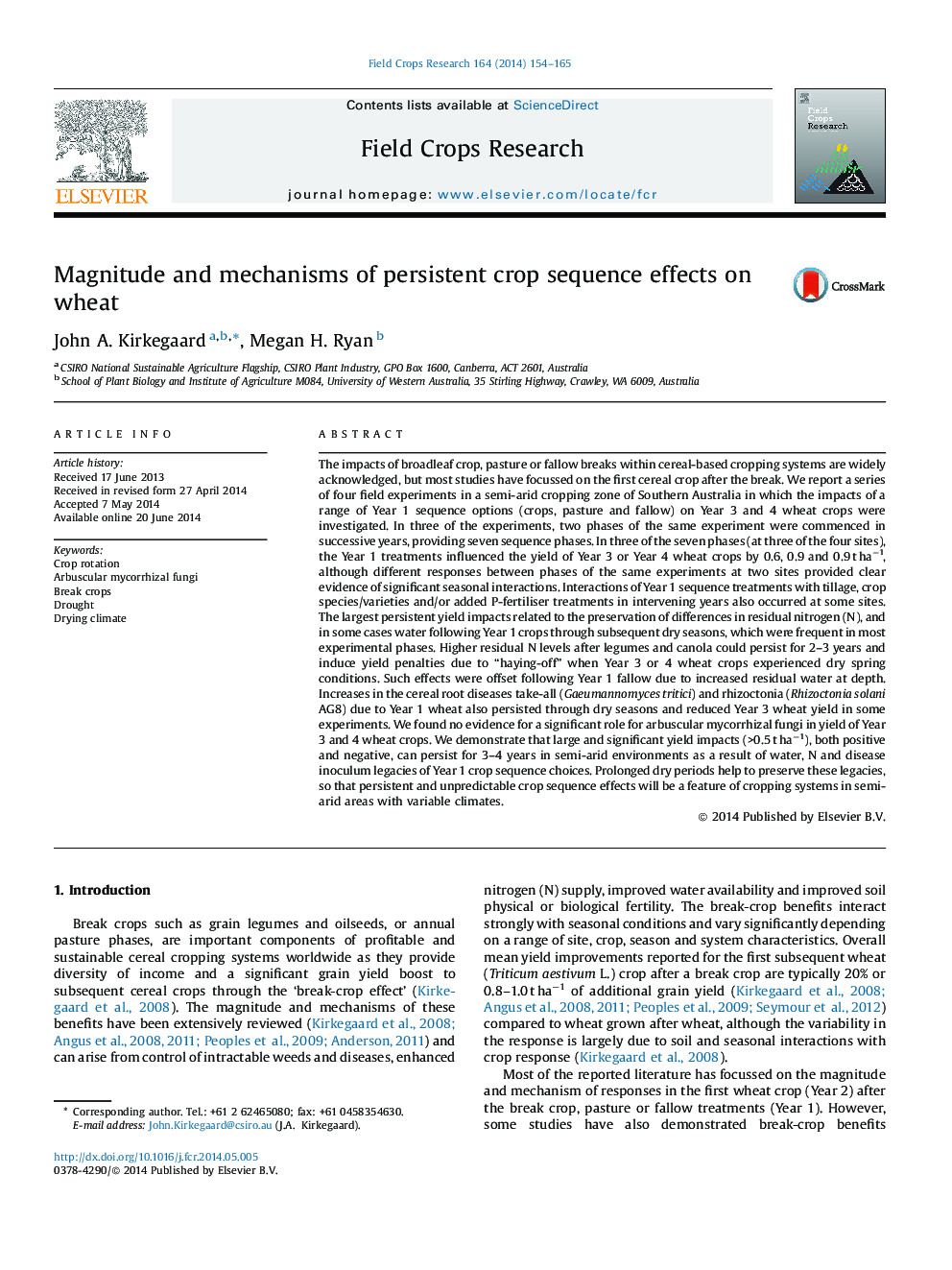| کد مقاله | کد نشریه | سال انتشار | مقاله انگلیسی | نسخه تمام متن |
|---|---|---|---|---|
| 4510096 | 1624699 | 2014 | 12 صفحه PDF | دانلود رایگان |
عنوان انگلیسی مقاله ISI
Magnitude and mechanisms of persistent crop sequence effects on wheat
ترجمه فارسی عنوان
ابعاد و مکانیزم های اثرات رد پایدار محصول بر گندم
دانلود مقاله + سفارش ترجمه
دانلود مقاله ISI انگلیسی
رایگان برای ایرانیان
کلمات کلیدی
تناوب زراعی، قارچ میکوریزا آربوسکول، شکستن محصولات، خشکی، خشک شدن آب و هوا،
موضوعات مرتبط
علوم زیستی و بیوفناوری
علوم کشاورزی و بیولوژیک
علوم زراعت و اصلاح نباتات
چکیده انگلیسی
The impacts of broadleaf crop, pasture or fallow breaks within cereal-based cropping systems are widely acknowledged, but most studies have focussed on the first cereal crop after the break. We report a series of four field experiments in a semi-arid cropping zone of Southern Australia in which the impacts of a range of Year 1 sequence options (crops, pasture and fallow) on Year 3 and 4 wheat crops were investigated. In three of the experiments, two phases of the same experiment were commenced in successive years, providing seven sequence phases. In three of the seven phases (at three of the four sites), the Year 1 treatments influenced the yield of Year 3 or Year 4 wheat crops by 0.6, 0.9 and 0.9 t haâ1, although different responses between phases of the same experiments at two sites provided clear evidence of significant seasonal interactions. Interactions of Year 1 sequence treatments with tillage, crop species/varieties and/or added P-fertiliser treatments in intervening years also occurred at some sites. The largest persistent yield impacts related to the preservation of differences in residual nitrogen (N), and in some cases water following Year 1 crops through subsequent dry seasons, which were frequent in most experimental phases. Higher residual N levels after legumes and canola could persist for 2-3 years and induce yield penalties due to “haying-off” when Year 3 or 4 wheat crops experienced dry spring conditions. Such effects were offset following Year 1 fallow due to increased residual water at depth. Increases in the cereal root diseases take-all (Gaeumannomyces tritici) and rhizoctonia (Rhizoctonia solani AG8) due to Year 1 wheat also persisted through dry seasons and reduced Year 3 wheat yield in some experiments. We found no evidence for a significant role for arbuscular mycorrhizal fungi in yield of Year 3 and 4 wheat crops. We demonstrate that large and significant yield impacts (>0.5 t haâ1), both positive and negative, can persist for 3-4 years in semi-arid environments as a result of water, N and disease inoculum legacies of Year 1 crop sequence choices. Prolonged dry periods help to preserve these legacies, so that persistent and unpredictable crop sequence effects will be a feature of cropping systems in semi-arid areas with variable climates.
ناشر
Database: Elsevier - ScienceDirect (ساینس دایرکت)
Journal: Field Crops Research - Volume 164, 1 August 2014, Pages 154-165
Journal: Field Crops Research - Volume 164, 1 August 2014, Pages 154-165
نویسندگان
John A. Kirkegaard, Megan H. Ryan,
